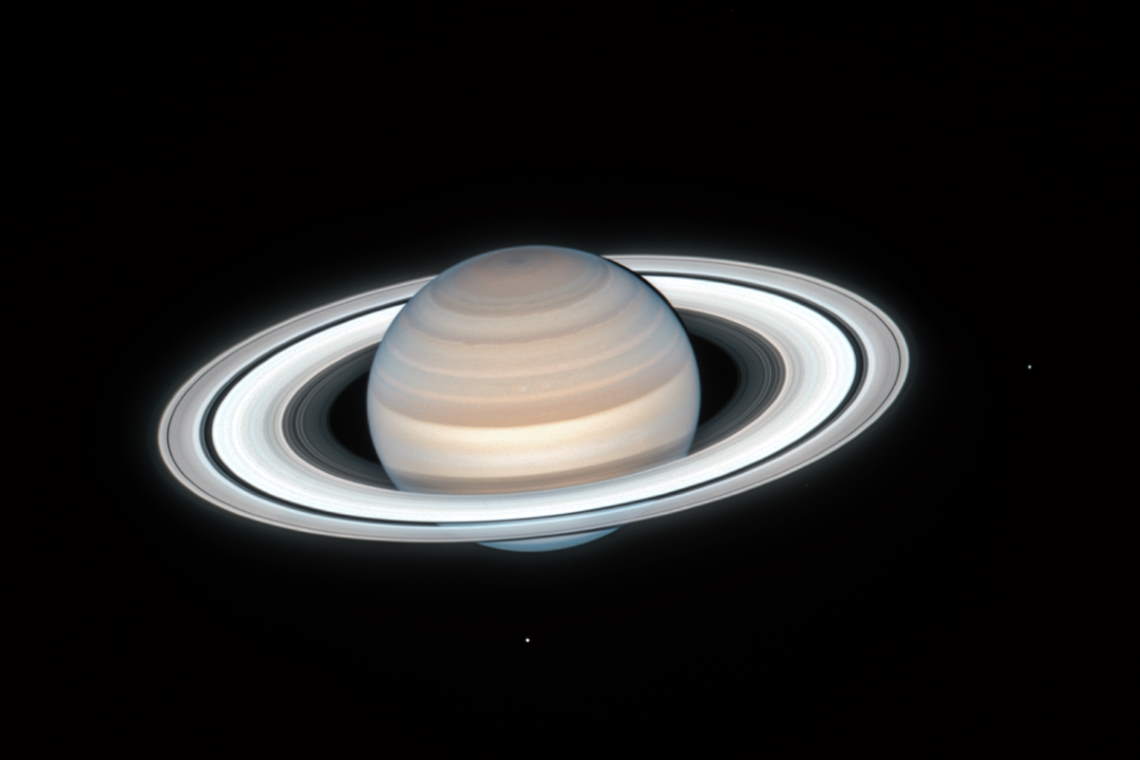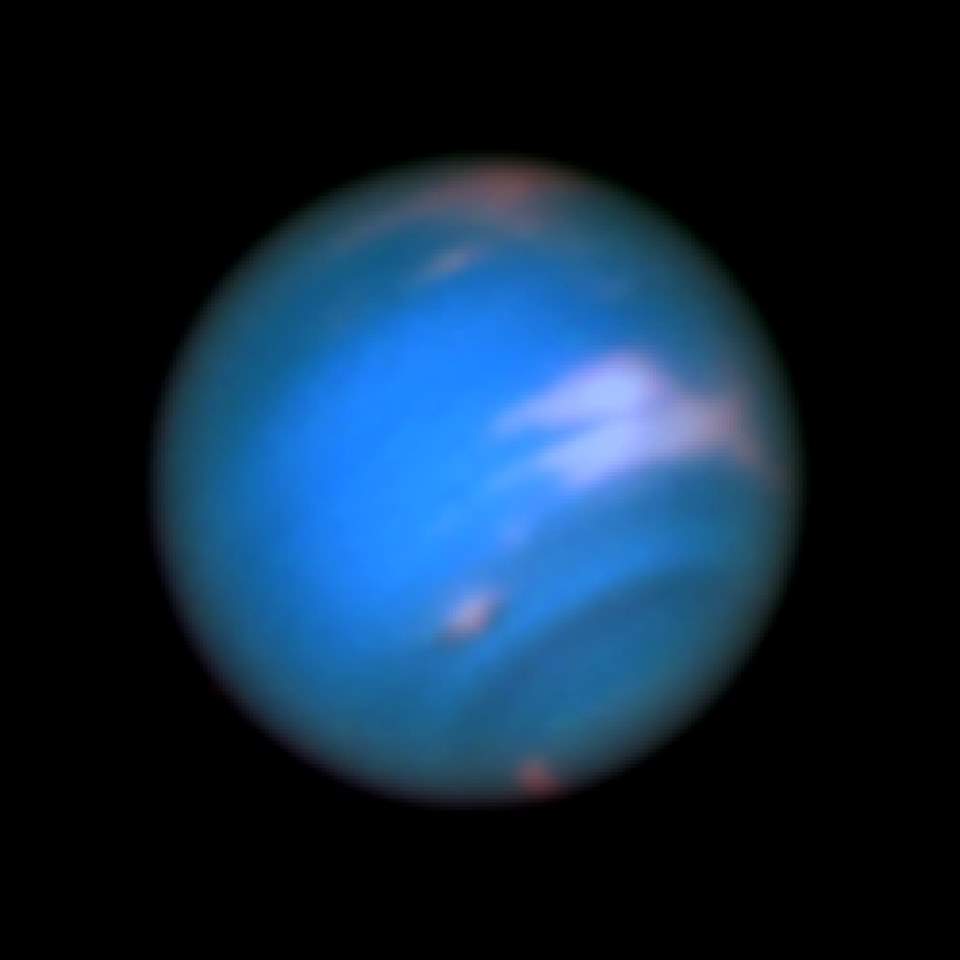NASA’s Hubble Space Telescope took this spectacular photo of Saturn and its rings on July 4, 2020, when the ringed gas giant was 839 million miles (1,35 billion kilometers) from Earth.
Hubble Sees Summertime on Saturn
NASA has published the latest photo of Saturn with the title of “Hubble sees summertime on Saturn”. Because the image was taken during summer in the planet’s northern hemisphere.

Here’s the explanatory text from the NASA website:
Hubble found a number of small atmospheric storms. These are transient features that appear to come and go with each yearly Hubble observation. The banding in the northern hemisphere remains pronounced as seen in Hubble’s 2019 observations, with several bands slightly changing color from year to year.
The ringed planet’s atmosphere is mostly hydrogen and helium with traces of ammonia, methane, water vapor, and hydrocarbons that give it a yellowish-brown color.
Hubble photographed a slight reddish haze over the northern hemisphere in this color composite. This may be due to heating from increased sunlight, which could either change the atmospheric circulation or perhaps remove ices from aerosols in the atmosphere. Another theory is that the increased sunlight in the summer months is changing the amounts of photochemical haze produced.
“It’s amazing that even over a few years, we’re seeing seasonal changes on Saturn,” said lead investigator Amy Simon of NASA’s Goddard Space Flight Center in Greenbelt, Maryland. Conversely, the just-now-visible south pole has a blue hue, reflecting changes in Saturn’s winter hemisphere.
Hubble’s sharp view resolves the finely etched concentric ring structure. The rings are mostly made of pieces of ice, with sizes ranging from tiny grains to giant boulders. Just how and when the rings formed remains one of our solar system‘s biggest mysteries. Conventional wisdom is that they are as old as the planet, over 4 billion years. But because the rings are so bright – like freshly fallen snow – a competing theory is that they may have formed during the age of the dinosaurs.
Many astronomers agree that there is no satisfactory theory that explains how rings could have formed within just the past few hundred million years. “However, NASA’s Cassini spacecraft measurements of tiny grains raining into Saturn’s atmosphere suggest the rings can only last for 300 million more years, which is one of the arguments for a young age of the ring system,” said team member Michael Wong of the University of California, Berkeley.
Two of Saturn’s icy moons are clearly visible in this exposure: Mimas at right, and Enceladus at the bottom.
This image is taken as part of the Outer Planets Atmospheres Legacy (OPAL) project. OPAL is helping scientists understand the atmospheric dynamics and evolution of our solar system‘s gas giant planets. In Saturn’s case, astronomers continue tracking shifting weather patterns and storms.
Outer Planet Atmospheres Legacy (OPAL)
Long time base observations of the outer planets are critical in understanding the atmospheric dynamics and evolution of the gas giants. OPAL is a project to obtain long-time baseline observations of the outer planets in order to understand their atmospheric dynamics and evolution as gas giants.
The yearly observations from OPAL throughout the remainder of Hubble’s operation will provide a legacy of time-domain images for use by planetary scientists. The project will ultimately observe all of the giant planets in the solar system (Jupiter, Saturn, Uranus, and Neptune) in a wide range of filters.
The images are processed using an ellipsoid limb-fitting technique, with an additional fringe correction applied to the narrow-band filters only, which amounts to a few percent corrections. Mosaics are created for each observed filter in a projection that spans 360 degrees of longitude.
The Hubble Space Telescope is a unique asset to planetary science, allowing high spatial resolution data with absolute photometric knowledge. For the outer planets, gas/ice giant planets Jupiter, Saturn, Uranus, and Neptune, many phenomena happen on timescales of years to decades, and the data we propose is beyond the scope of a typical GO program.
Hubble is the only platform that can provide high spatial resolution global studies of cloud coloration, activity, and motion on a consistent time basis to help constrain the underlying mechanics.
Sources
- “Hubble Sees Summertime on Saturn” on the NASA website
- Outer Planet Atmospheres Legacy (OPAL) on archive.stsci.edu
- Hubble 2020: Outer Planet Atmospheres Legacy (OPAL) Program on ui.adsabs.harvard.edu
- Space Shuttle Endeavour’s Touchdown Meets Columbia’s Salute [An amazing photo from the past] - February 29, 2024
- Moon Landings: All-Time List [1966-2024] - February 23, 2024
- From Orbit to Ordinary: 10 Earthly Applications of Space Technology - January 23, 2024



